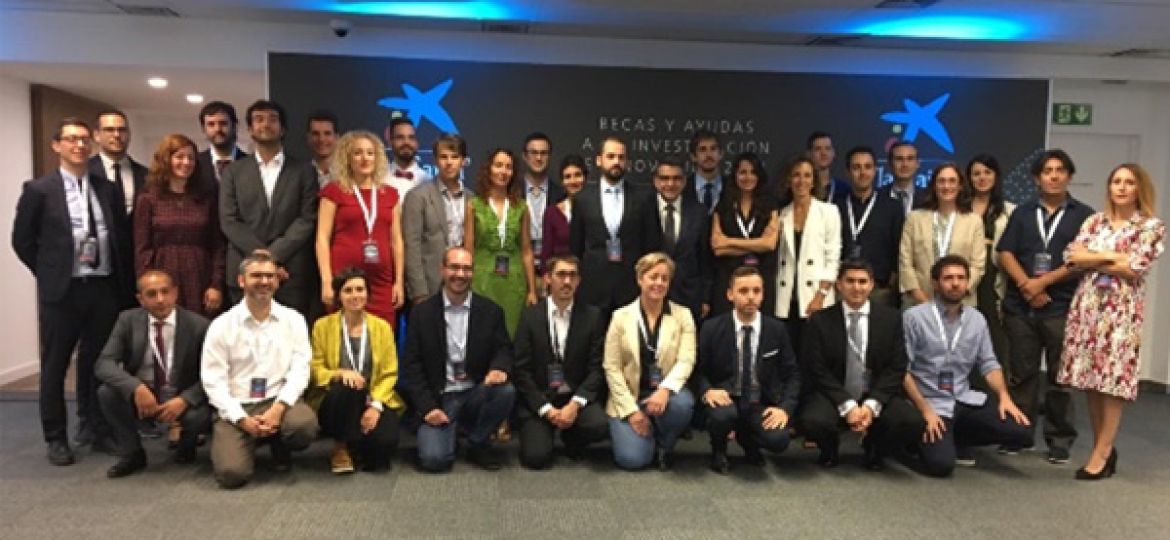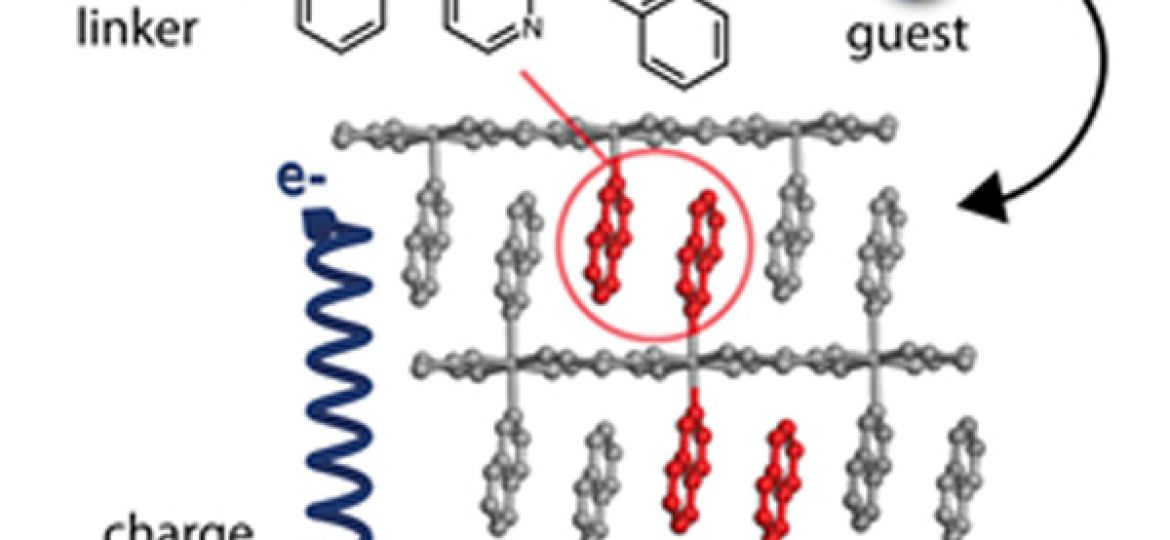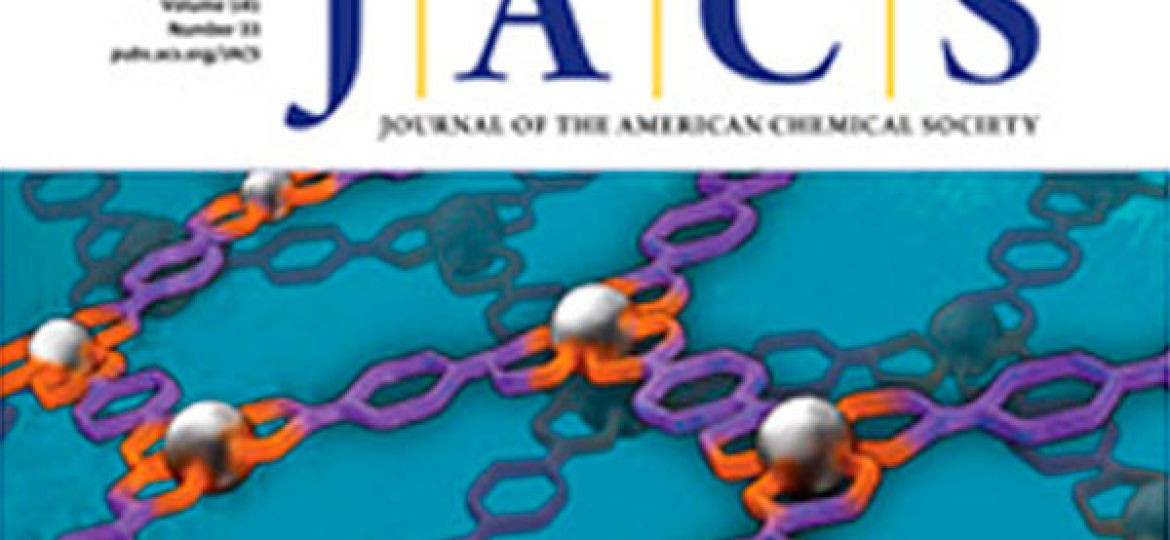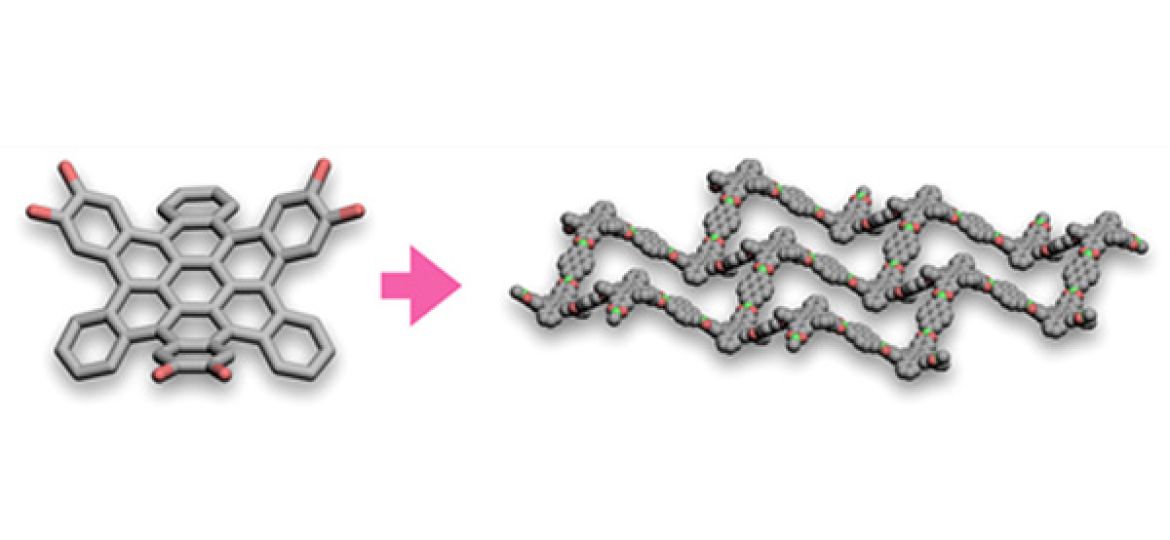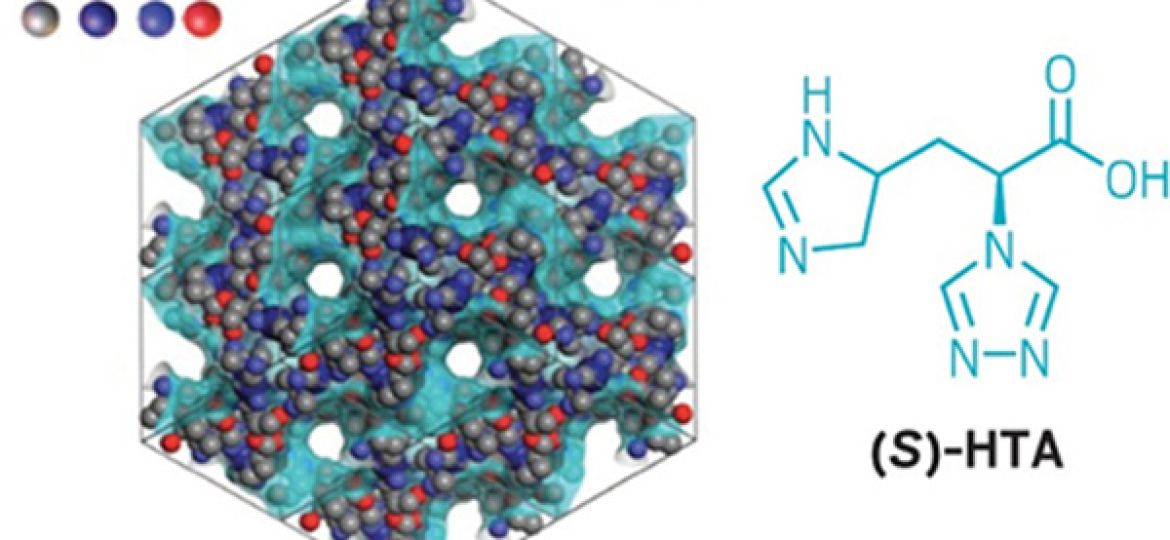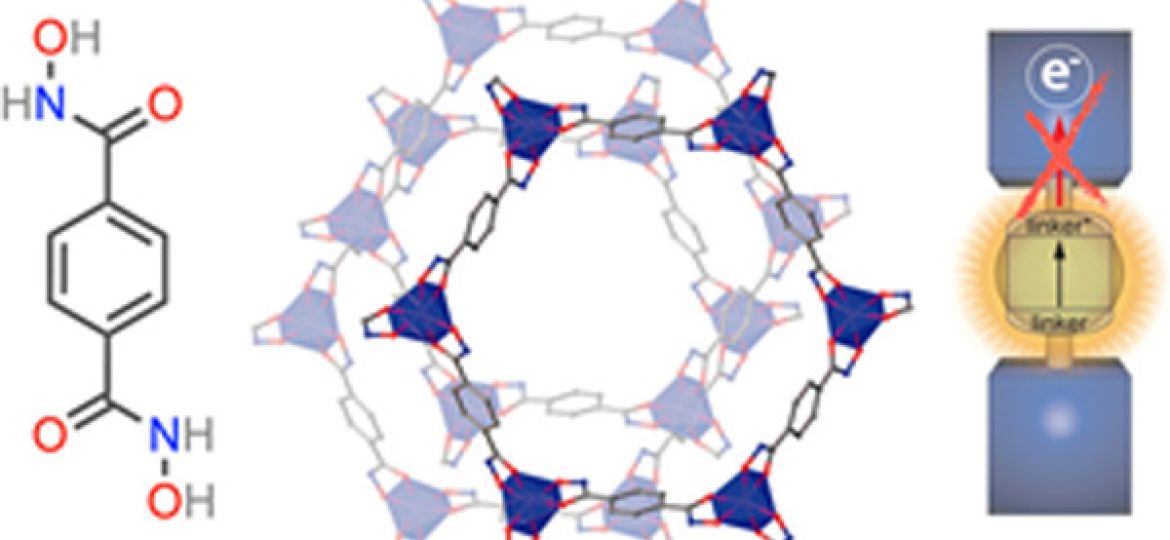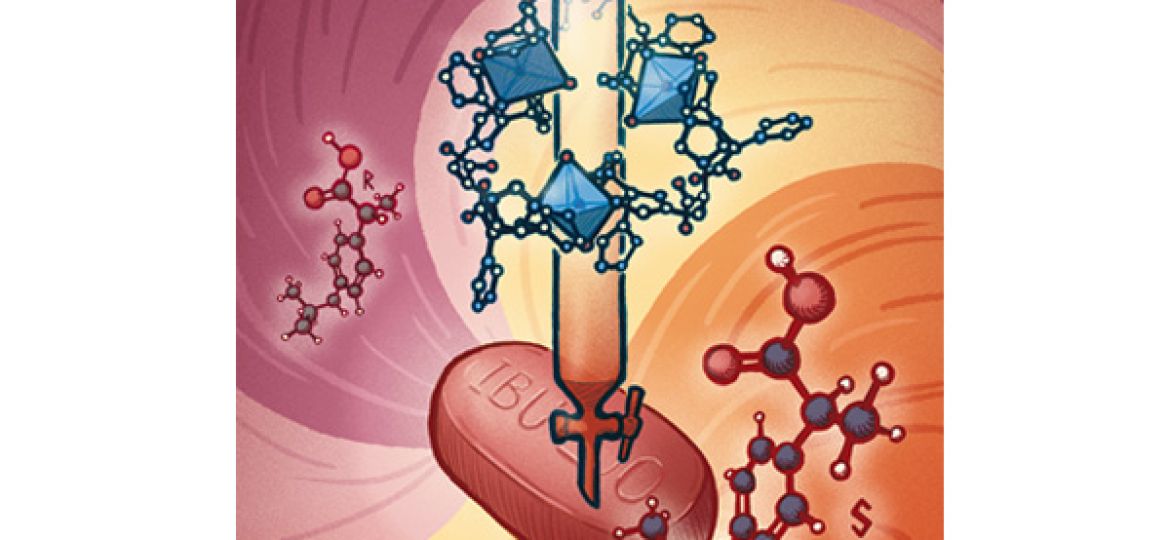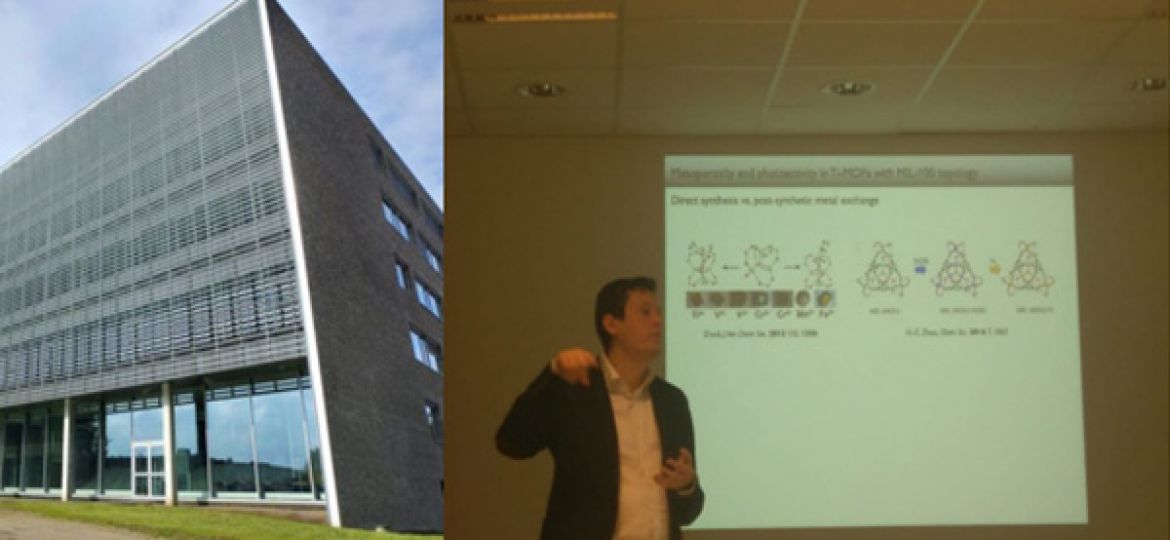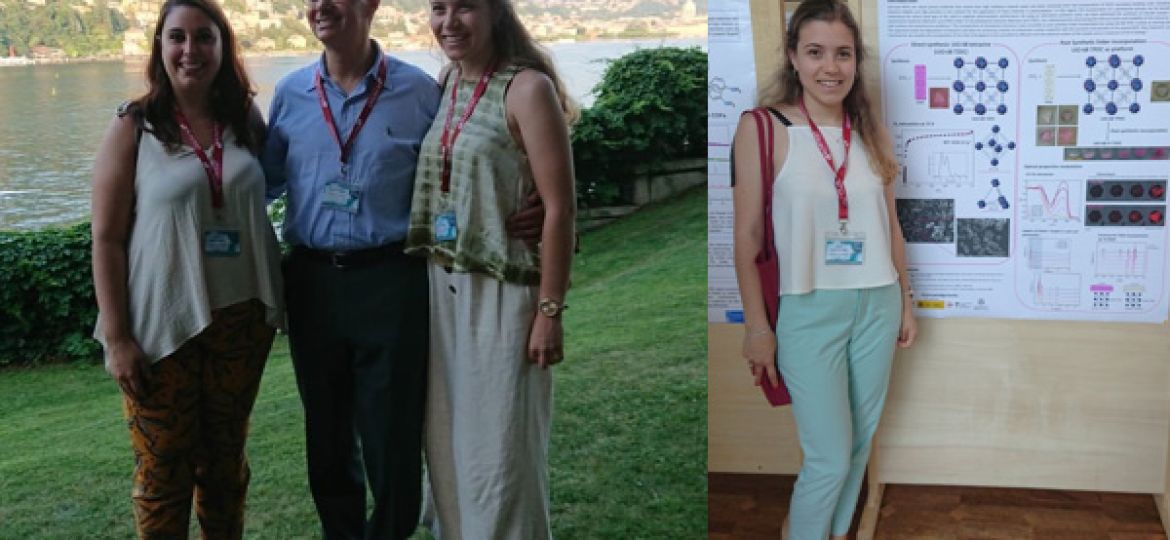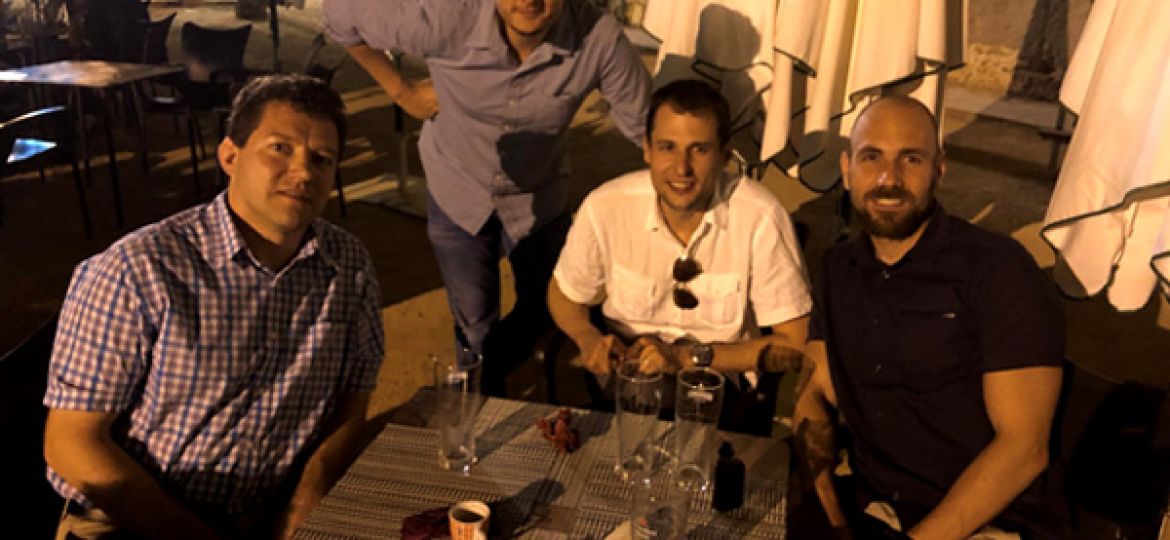Francisco G. Cirujano was present at the award ceremony of La Caixa research fellowships, awarded for the development of new methodologies for the efficient synthesis of pharmaceuticals. For more details see here.
Our study of the nanoscale properties of a family of 2D FeII Hoffmann-like coordination polymers was just published as an article in Chemistry of Materials. This collaboration between from FuniMat and SMolMat research groups of the ICMol, and scientist from the DELTA synchrotron of TU Dortmund. We report the fabrication of ultrathin films of (thickness < 30 nm) of this family of 2D FeII Hoffmann-like coordination polymers, and the subsequent study of their electronic and structural properties at the nanoscale. This type of study is unprecedented in spin crossover coordination polymers and contributes to the perspective integration of these materials into the field of electronics. You can read the full text here
Our work on the synthesis of hydroxamic titanium frameworks has been highlighted as supplementary cover in JACS. Thanks to the creative team of Principia for the excellent result. Hope you will like it!
Check our last collaboration with Mateo-Alonso´s group in Polymat. Marta-COF-1 is a nonplanar 2D-COF in which the waviness of the framework does not disrupt the interlayer p-p stacking so their charge transporting properties are similar to those of the best performing planar 2D COFs. The high stability and crystallinity of Marta-COF-1 have allowed an extraordinary level of characterization by HR-TEM, showing chairlike honeycomb facets and aligned mesoporous channels consistent with the experimental and predicted dimensions and packing. For more info see here
Our work on MOFs as chiral stationary phases has been highlighted in Chemical & Engineering News. Check it out!
Natalia´s work is already available at JACS. The design of metalorganic frameworks with chemical stability is limited to metal connectors as carboxylates or azolates. Inspired by the chemistry of siderophores, we report a hydroxamate titanium framework that combines photoactivity with hydrolytic stability. The straightforward derivatization of carboxylic linkers with hydroxamic groups might represent an alternative route to broaden the family of reticular solids. Check it out!
Our work in collaboration with J.R. Galan-Mascaros group at ICIQ has been published in JACS. This work highlights the versatility and efficiency of TAMOF-1 as a chiral stationary phase capable of separating a variety of model racemic mixtures, including drugs, in a wide range of solvents of different polarity. This performance arises from the combination of chiral channels and weak binding sites allowing for low-energy separation of enantiomers, without any strong binding/recognition sites. Click for more info
Carlos visited KU Leuven (Prof. Dirk De Vos and Francisco García Cirujano) to present the last results of the team on charge transport and photoactivity in MOFs.
MOF School held in Lake Como (Italy) with an amazing line up of invited speakers and presented her recent work on the nanosizing of titanium frameworks and photoactive Zr(IV) MOFs. They also had time to make new friends!
See here for more info.
Alexei Ganin, Lecturer at the University of Glasgow, visited us to share a few days and present the last advances of his team on using solid state electrocatalysts for hydrogen evolution from water. Thanks for visiting!

